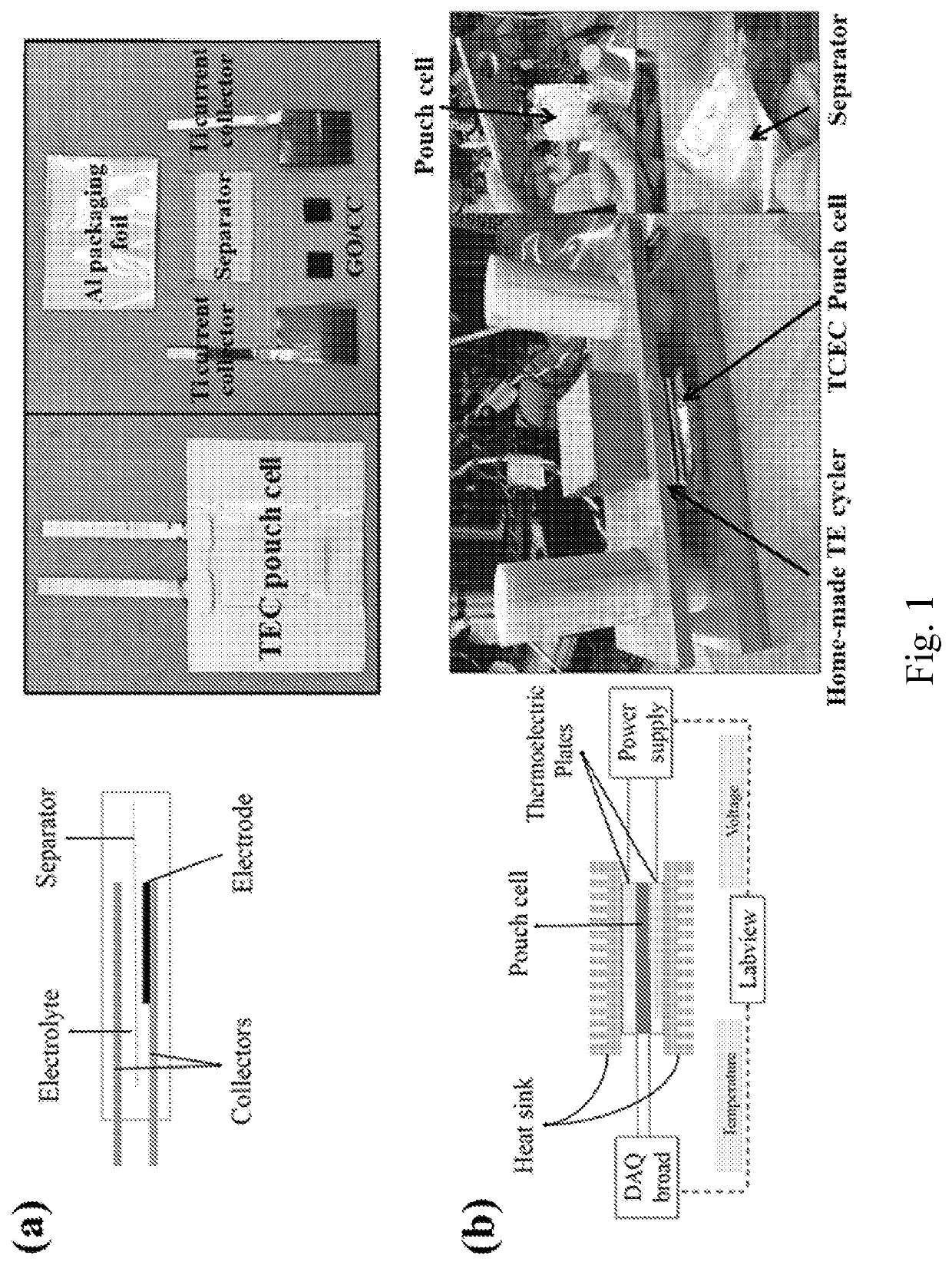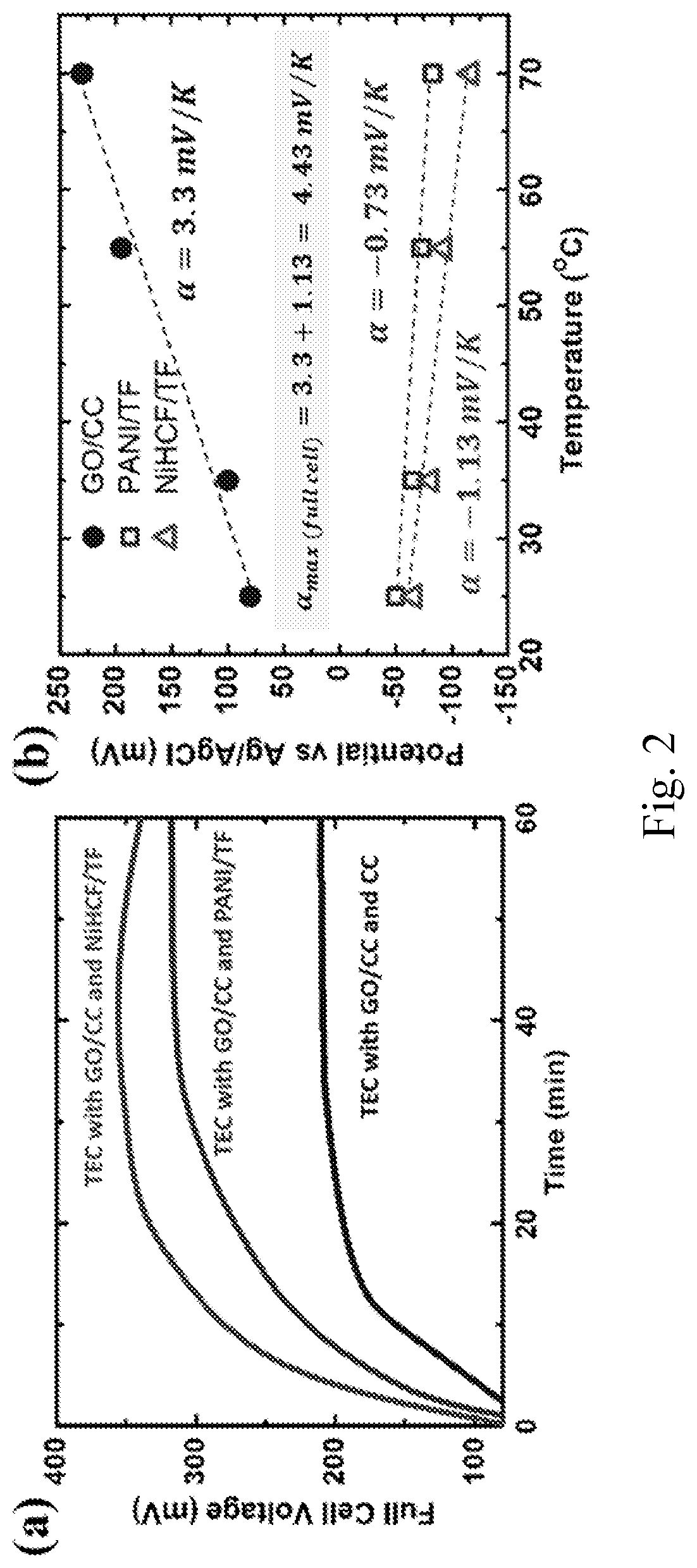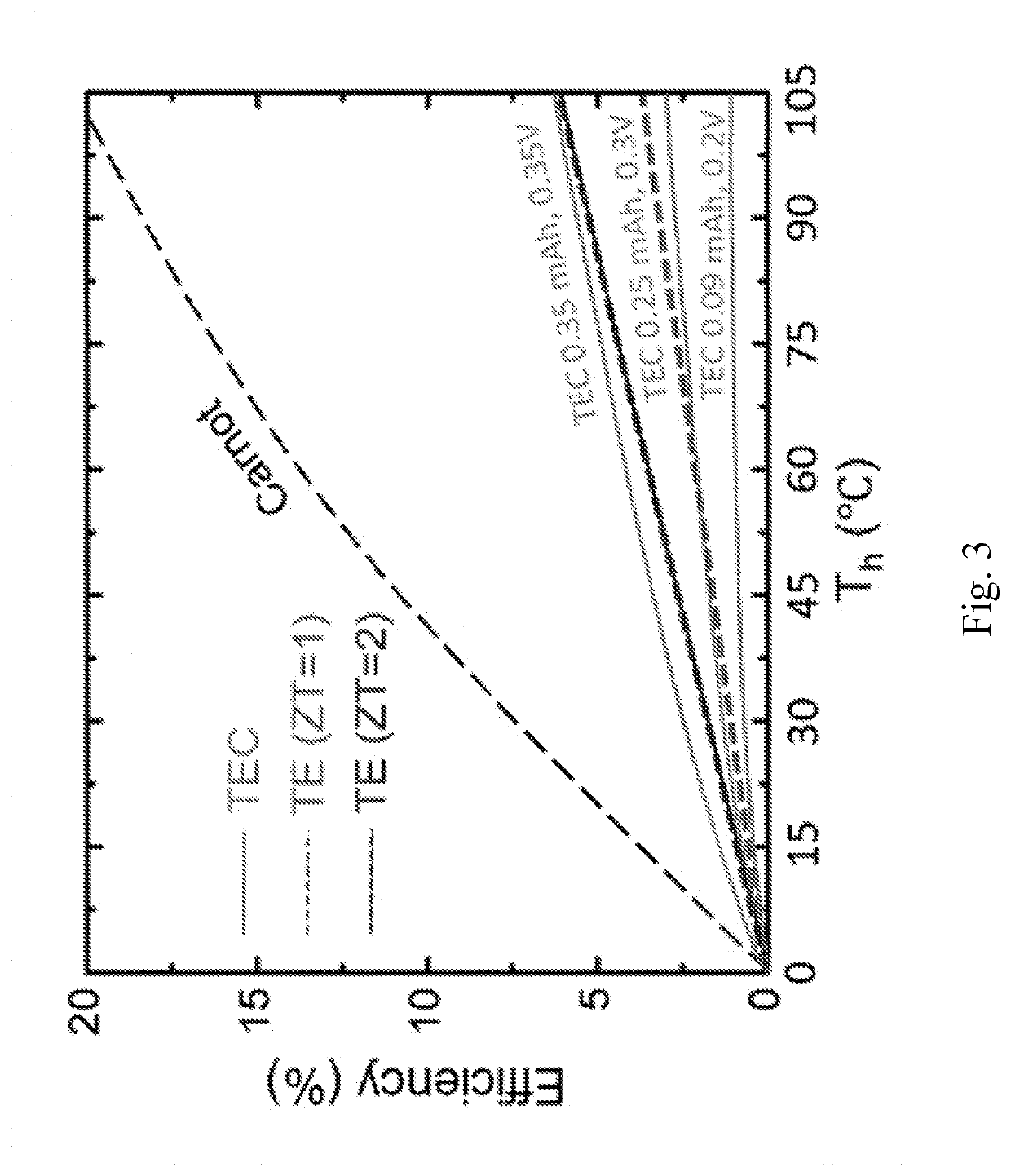Thermo-electric capacitor
a capacitor and electrochemical technology, applied in the field of thermoelectrochemical capacitors, can solve the problems of inefficient conversion of low-grade heat to electricity, waste of 100° c. of ubiquitous heat energy, and inefficiency of low-grade heat conversion, etc., and achieve fast kinetics, and high electrochemical seebeck coefficient
- Summary
- Abstract
- Description
- Claims
- Application Information
AI Technical Summary
Benefits of technology
Problems solved by technology
Method used
Image
Examples
example 1
[0045]To facilitate rapid and uniform heating, a two-electrode or three-electrode TEC pouch cell configuration was used in the preliminary experiment, as shown in FIG. 1(a). Three-electrode pouch cells were used to measure the potential of each electrode independently with respect to the reference Ag / AgCl electrode located between separators. The reference Ag / AgCl electrode was fabricated by oxidizing Ag foil in 1M NaCl under a constant current of 1 mA / cm2 for 40 min. Two-electrode pouch cells were used to measure the full-cell thermal voltage, electrical discharge capacity, and energy conversion efficiency (ηE). The positive electrode, porous separator, and negative electrode were sandwiched with 500 μL 1M KCl electrolyte (pH=7, 102 mS / cm). Aqueous KCl was used as the electrolyte because it is neutral, environmentally robust, easy to handle in ambient condition, and has an almost two-fold conductivity compared to organic electrolytes (e.g., 1M TEABF4 in ACN). A Ti foil was used as ...
example 2 -
Example 2-GO Positive Electrode
[0046]Graphene oxide (GO), synthesized from natural graphite flakes via modified Hummer's method, was chosen as the active material because it has more and stronger carboxyl and carbonyl functional groups (e.g., —COOH, —C═O) on the surface. GO, carbon black, and polyvinylidene difluoride (PVDF) were mixed with N-Methyl-2-pyrrolidone (NMP) into a paste and then coated on a carbon cloth (CC). The mass ratio of GO, carbon black, and PVDF was 75:15:10, and the total solid content in NMP was around 25 mg / mL. After drying for 3 hours at 70° C., the mass loading of the GO was 3 mg / cm2.
example 3 -
Example 3-PANI or NiHCF Negative Electrode
[0047]The conductive polymer of PANT and MOF of NiHCF were used as active materials for the negative electrode, respectively. The PANT electrode was prepared by mixing 75 wt % PANT powders (emeraldine base), 15 wt % carbon black, and 10 wt % PVDF in NMP, which was then coated on Ti form (TF) or CC by drop casting. The mass loading of PANT was about 1 mg / cm2. Besides PANI, NiHCF was used as the active material for the negative electrode. NiHCF is a Prussian Blue (PB) analogue with the chemical formula KNiFe(CN)6.nH2O, which consist of large interstitial sites within an open framework that can host solvated alkali ions (e.g., K+ or Na+) and / or zeolitic water. This structure can allow rapid ion transport throughout its lattice during electrical charge / discharge processes. NiHCF nanoparticles were synthesized using a simple solution approach by dropping 50 mM Ni(NO3)2 solution into 25 mM K3Fe(CN)6 solution at 50° C. The NiHCF electrode was prepa...
PUM
| Property | Measurement | Unit |
|---|---|---|
| temperature | aaaaa | aaaaa |
| Seebeck coefficient | aaaaa | aaaaa |
| Seebeck coefficient | aaaaa | aaaaa |
Abstract
Description
Claims
Application Information
 Login to View More
Login to View More - R&D
- Intellectual Property
- Life Sciences
- Materials
- Tech Scout
- Unparalleled Data Quality
- Higher Quality Content
- 60% Fewer Hallucinations
Browse by: Latest US Patents, China's latest patents, Technical Efficacy Thesaurus, Application Domain, Technology Topic, Popular Technical Reports.
© 2025 PatSnap. All rights reserved.Legal|Privacy policy|Modern Slavery Act Transparency Statement|Sitemap|About US| Contact US: help@patsnap.com



